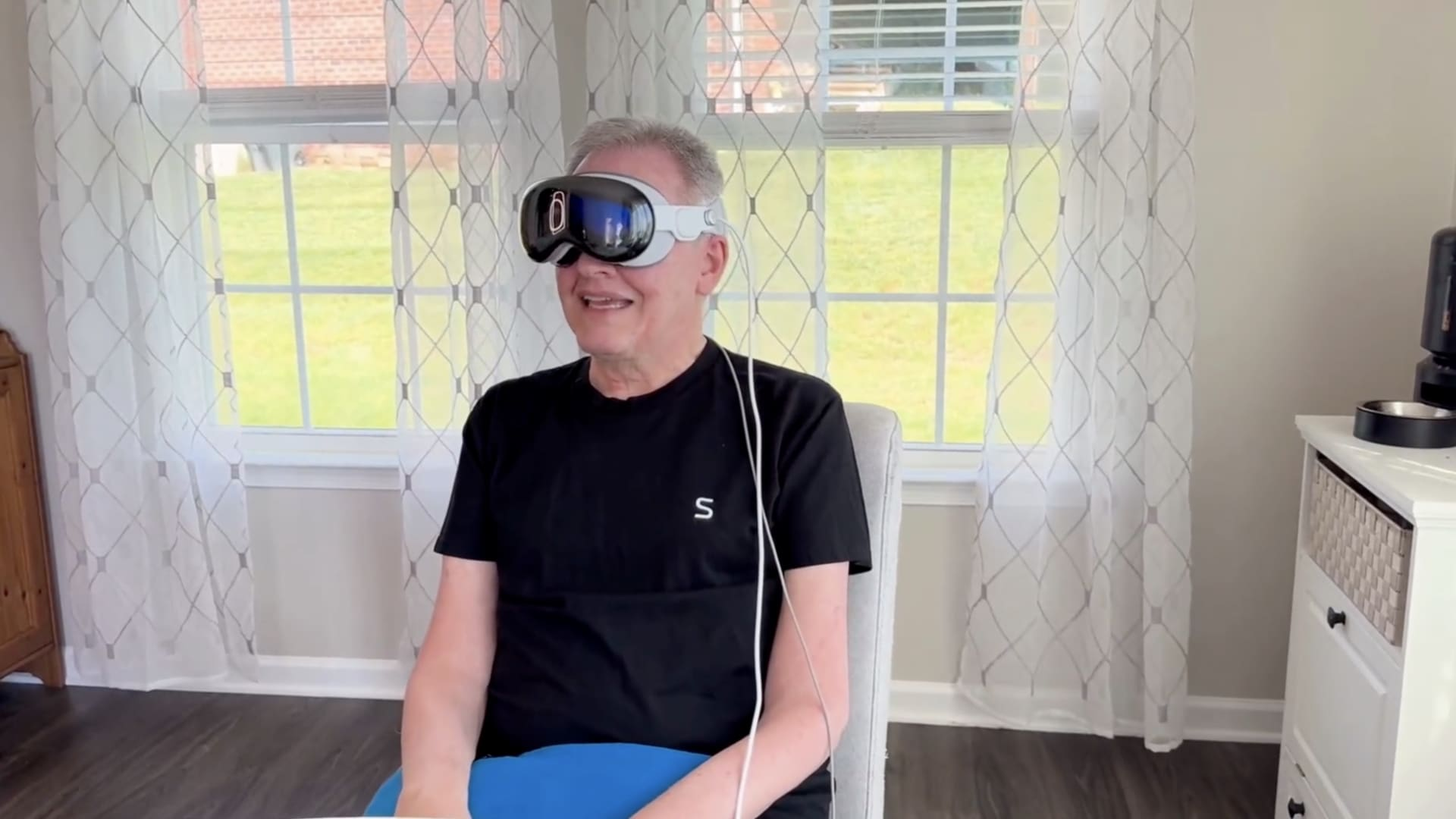Mark uses the Vision Pro with his BCI
Courtesy of Synchron
Neurotechnology startup Synchron announced Tuesday that it has connected its brain implant to AppleVision Pro headset from 's. It is now possible for patients with limited physical mobility to control the device using only their thoughts.
Synchron is building a brain-computer interface, or BCI, designed to help paralyzed patients operate technology like smartphones and computers with their minds. The company has implanted its BCI in six patients in the U.S. and four in Australia. It still needs approval from the U.S. Food and Drug Administration to market its technology more broadly.
Apple launched Vision Pro earlier this year and users typically control it with eye movements, voice commands and hand gestures. Synchron has been working to make it accessible to patients who can't speak or move their upper limbs.
Synchron CEO Thomas Oxley said he believes Apple’s iOS accessibility platform is best in class, so the company has initially focused on helping patients control devices within Apple’s ecosystem. He said Synchron will likely work to connect its BCI to other headsets, but is starting with the Vision Pro.
Apple has been “very supportive” of Vision Pro integration, he added.
“I think BCI is very well positioned to add tremendous value as a synergistic integration into the Apple ecosystem,” Oxley told CNBC in an interview.
Synchron is part of an increasingly competitive BCI industry, and the company said Tuesday it is the first to connect its system to Apple’s Vision Pro. Other companies including Paradromics, Precision Neuroscience, Blackrock Neurotech and Elon Musk’s Neuralink are also developing BCI systems, though their designs and ambitions vary.
Synchron's BCI is inserted through a patient's jugular vein, so open brain surgery is not required. It is applied to the blood vessel that lies on the surface of the brain's motor cortex. The stent-like device is connected to an antenna that sits under the skin on the chest. The antenna collects raw brain data and sends it to external devices.
Apple did not respond to CNBC's request for comment.
Synchron said a 64-year-old patient named Mark has pioneered the company's work with the Vision Pro headset.
Mark, who asked CNBC not to use his last name for privacy reasons, was implanted with Synchron's BCI in August 2023. He has a degenerative disease called amyotrophic lateral sclerosis, or ALS, which causes patients to gradually lose control of their muscles.
Since his diagnosis in January 2021, Mark has lost function in his shoulders, arms and hands, but can still speak and walk short distances.
Mark meets with Synchron for two hours twice a week to practice different skills and functions with his BCI. He said he has been trying out the Vision Pro on and off since April and can use it to text, play solitaire and watch TV.
He said using his BCI to control the headset isn't much different than using it to control his iPhone, iPad and computer. Some apps within the headset are more limiting and challenging than others, and he's still experimenting with new ways to use it.
“It's just another avenue for me to be able to experience some independence,” Mark told CNBC in an interview.
For example, Mark said he can no longer lift his arms to paint, so he is learning to use the Vision Pro to create art. He has also enjoyed using an app that lets him look at constellations in the sky, he said.
Mark is starting to lose some strength in his neck, but says he finds the headphones easy to use. He can wear them for two hours without getting tired and doesn't suffer from dizziness.
“It's really quite amazing,” Mark said.
Synchron is preparing for a larger clinical study with more patients, and Mark said he hopes his work with the headset will improve other people's experience.
Oxley said the integration with Vision Pro shows how BCIs can help paralyzed patients interact with consumer technologies.
“This is the beginning of a new therapeutic option to regain the ability to interact with digital technology that we take for granted,” Oxley said. “That's what this represents.”












